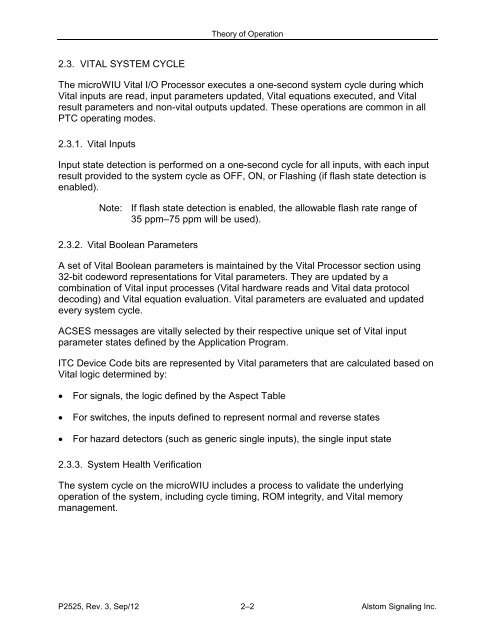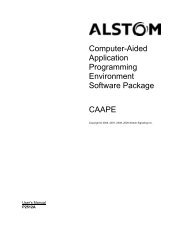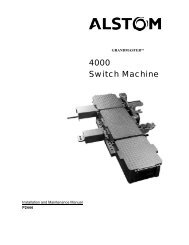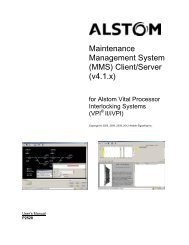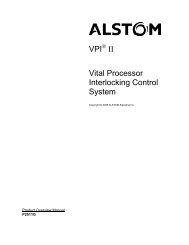microWIU⢠- Alstom
microWIU⢠- Alstom
microWIU⢠- Alstom
- No tags were found...
You also want an ePaper? Increase the reach of your titles
YUMPU automatically turns print PDFs into web optimized ePapers that Google loves.
Theory of Operation2.3. VITAL SYSTEM CYCLEThe microWIU Vital I/O Processor executes a one-second system cycle during whichVital inputs are read, input parameters updated, Vital equations executed, and Vitalresult parameters and non-vital outputs updated. These operations are common in allPTC operating modes.2.3.1. Vital InputsInput state detection is performed on a one-second cycle for all inputs, with each inputresult provided to the system cycle as OFF, ON, or Flashing (if flash state detection isenabled).Note: If flash state detection is enabled, the allowable flash rate range of35 ppm–75 ppm will be used).2.3.2. Vital Boolean ParametersA set of Vital Boolean parameters is maintained by the Vital Processor section using32-bit codeword representations for Vital parameters. They are updated by acombination of Vital input processes (Vital hardware reads and Vital data protocoldecoding) and Vital equation evaluation. Vital parameters are evaluated and updatedevery system cycle.ACSES messages are vitally selected by their respective unique set of Vital inputparameter states defined by the Application Program.ITC Device Code bits are represented by Vital parameters that are calculated based onVital logic determined by:• For signals, the logic defined by the Aspect Table• For switches, the inputs defined to represent normal and reverse states• For hazard detectors (such as generic single inputs), the single input state2.3.3. System Health VerificationThe system cycle on the microWIU includes a process to validate the underlyingoperation of the system, including cycle timing, ROM integrity, and Vital memorymanagement.P2525, Rev. 3, Sep/12 2–2 <strong>Alstom</strong> Signaling Inc.


